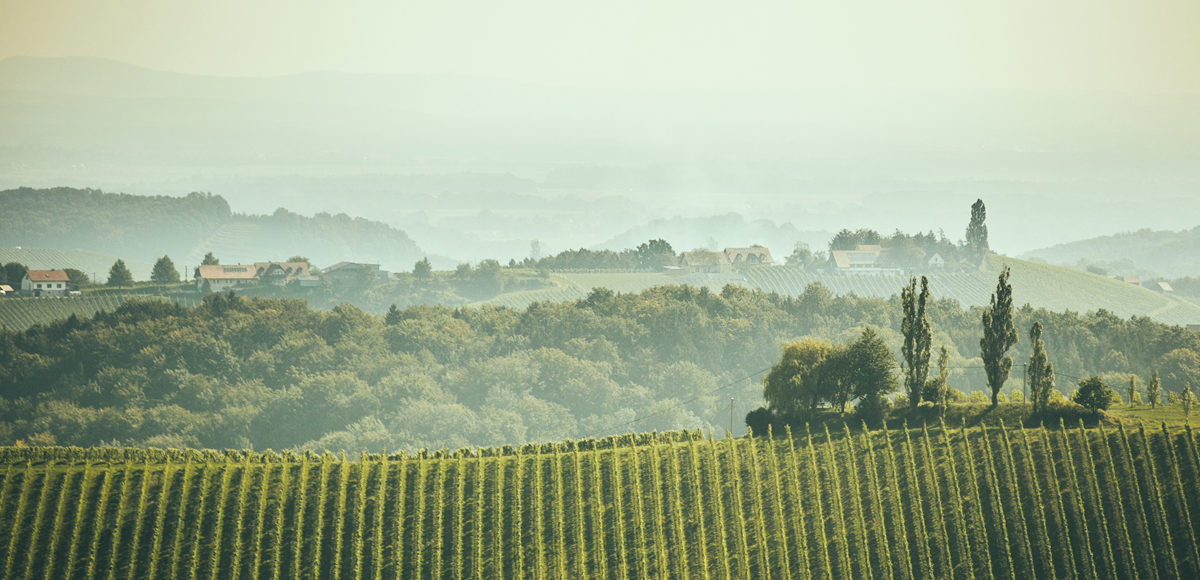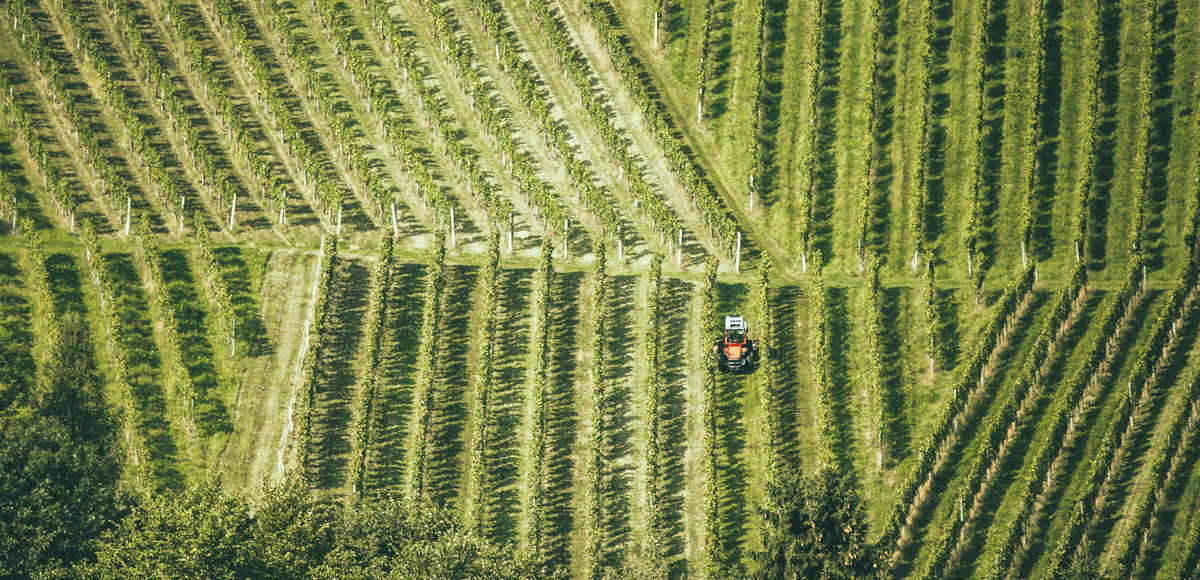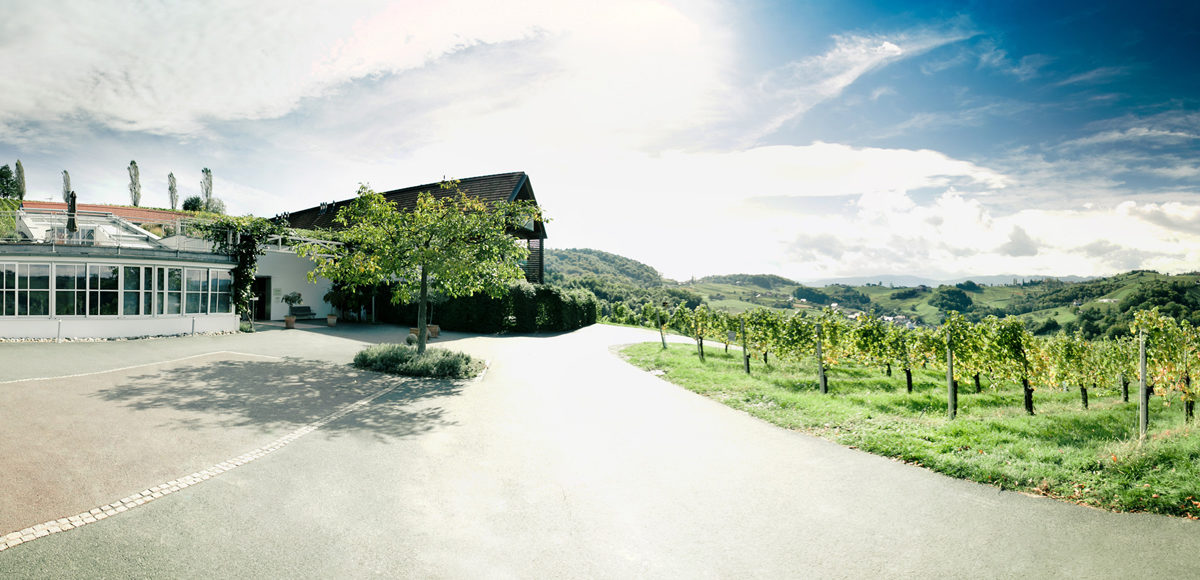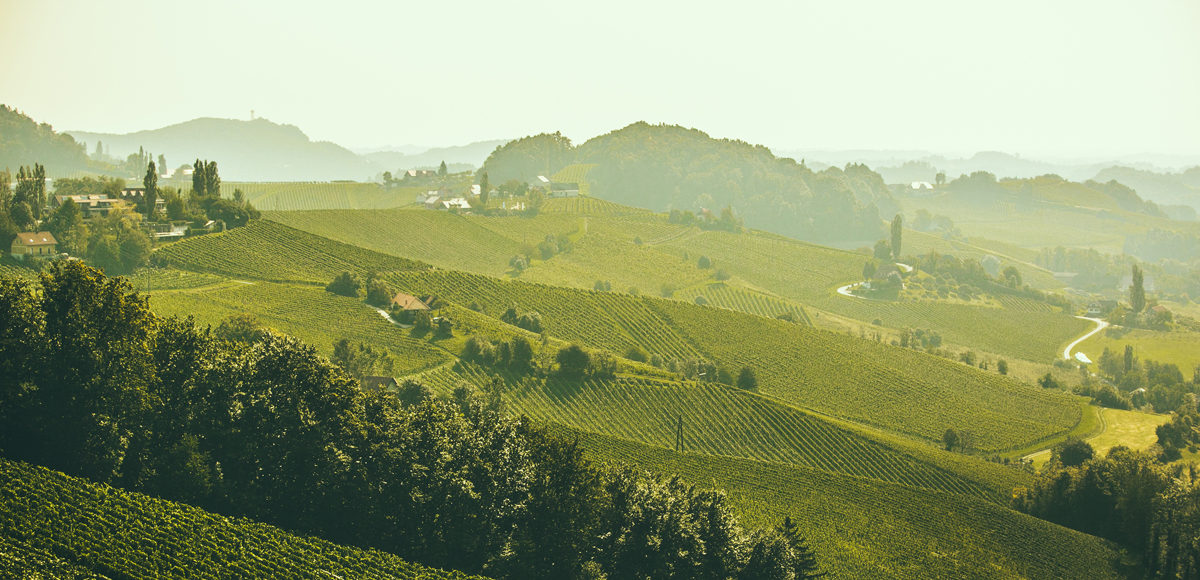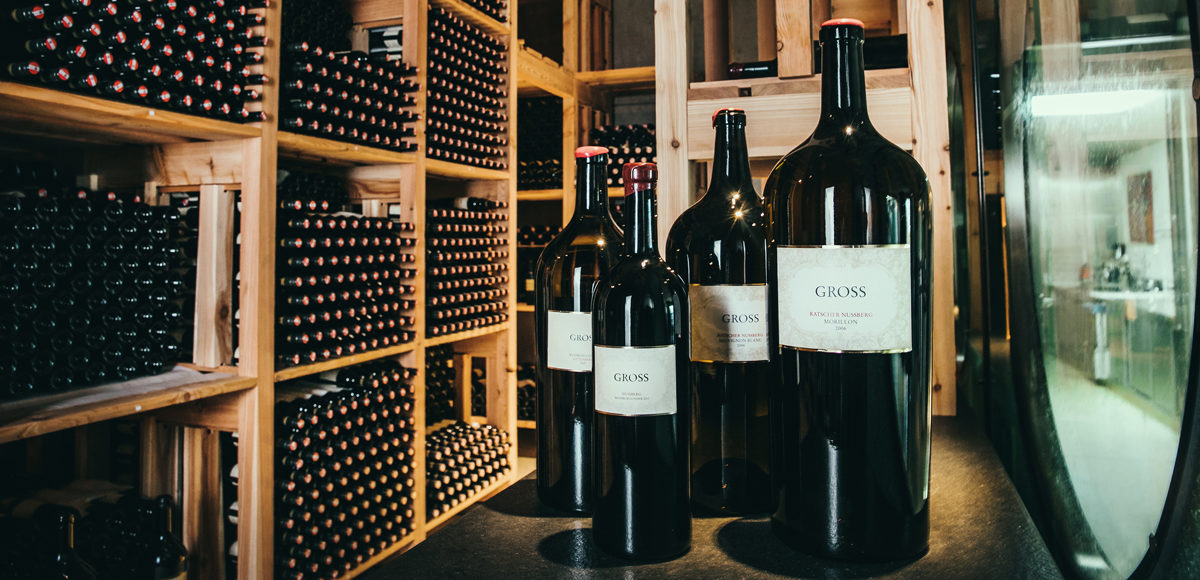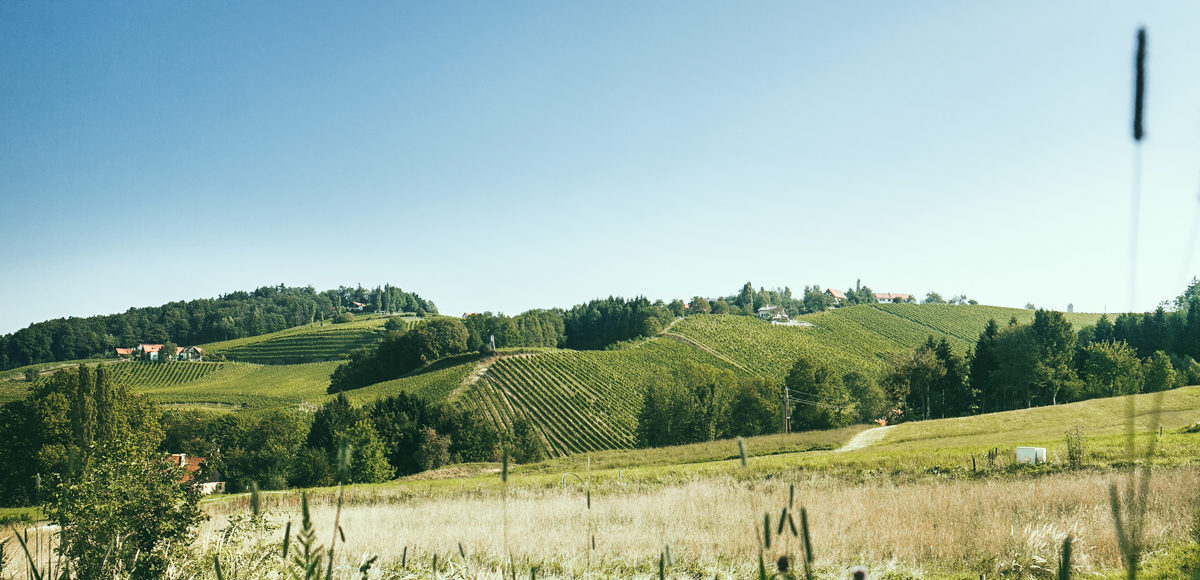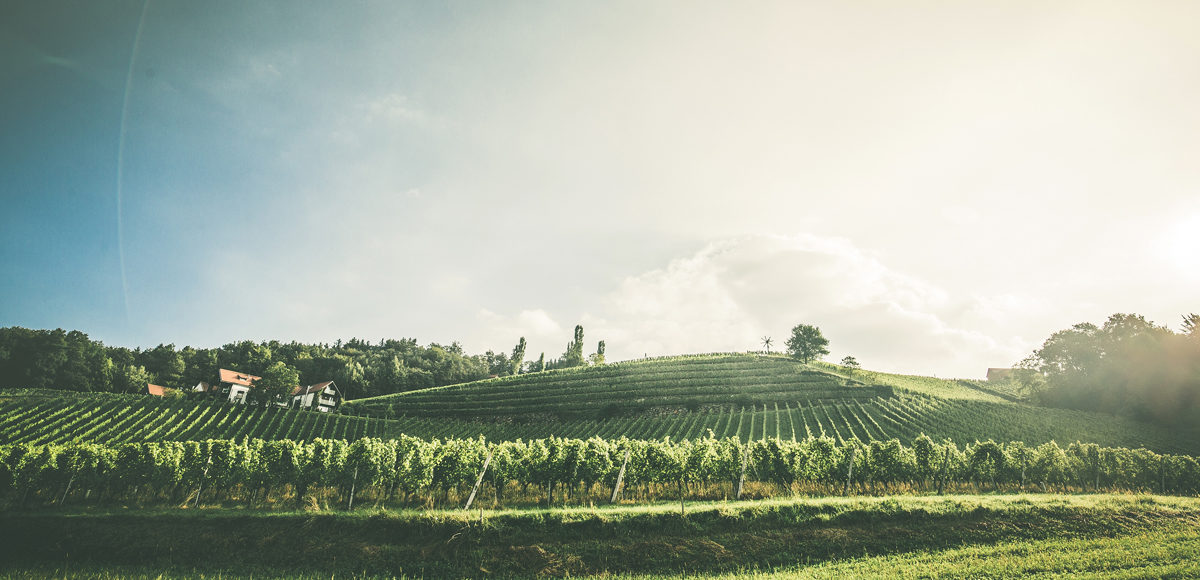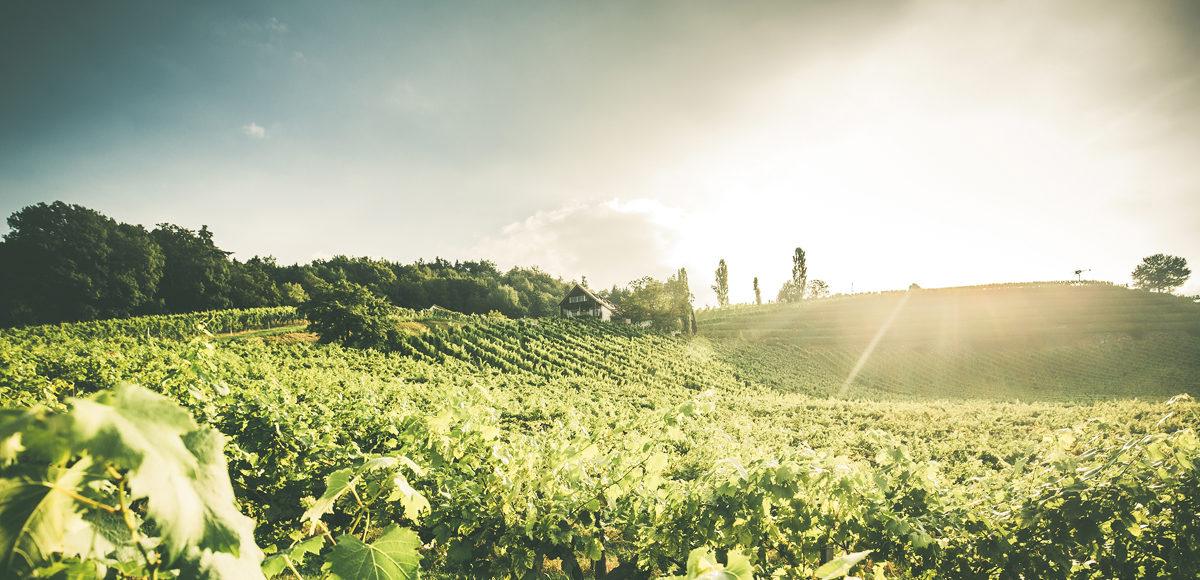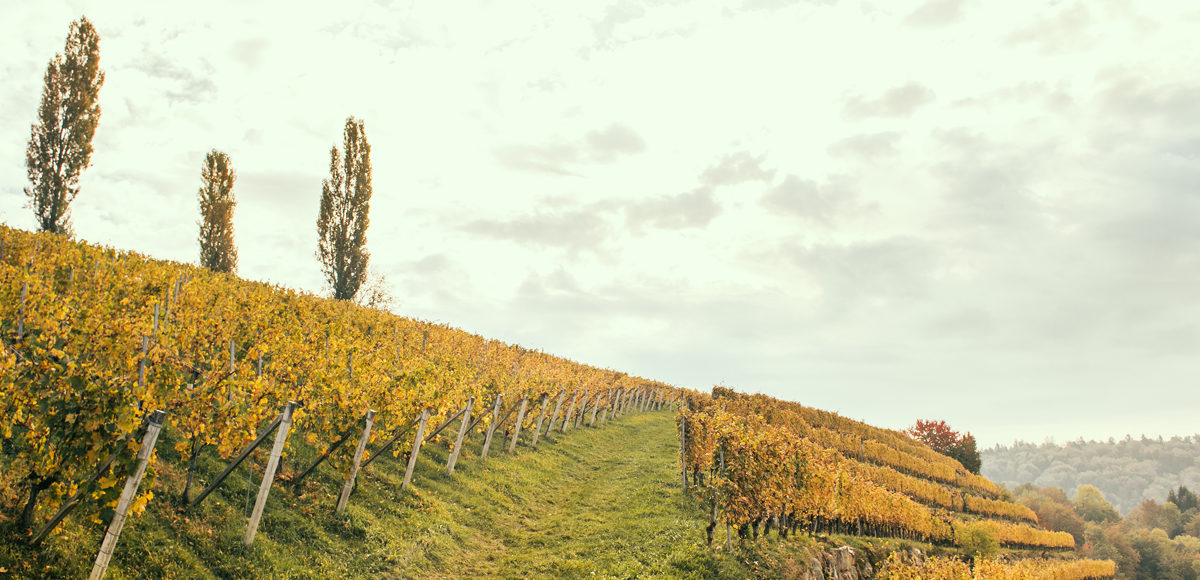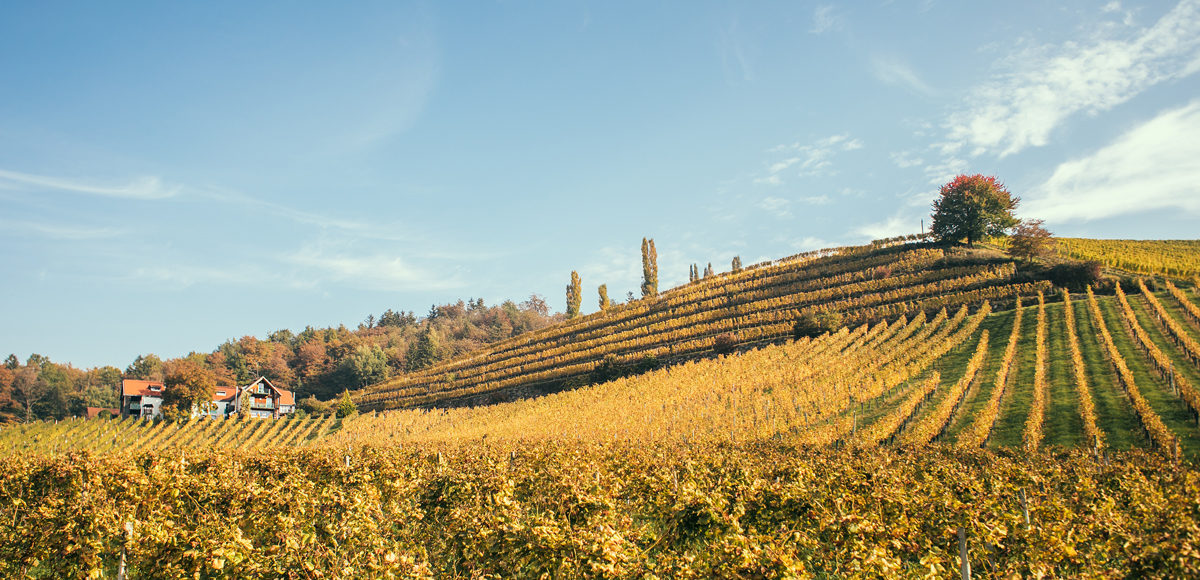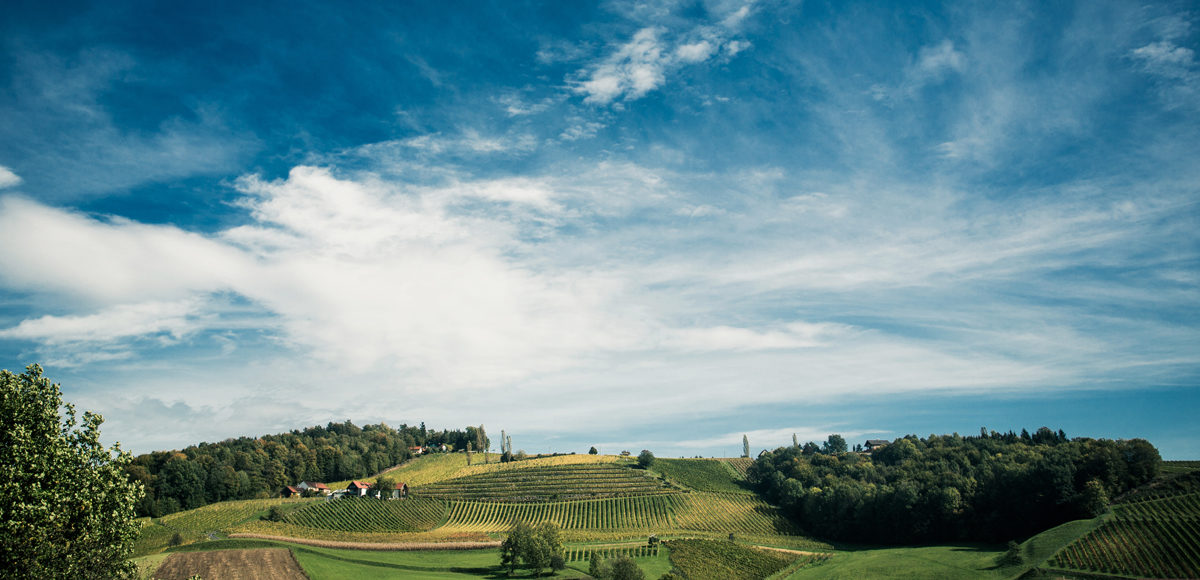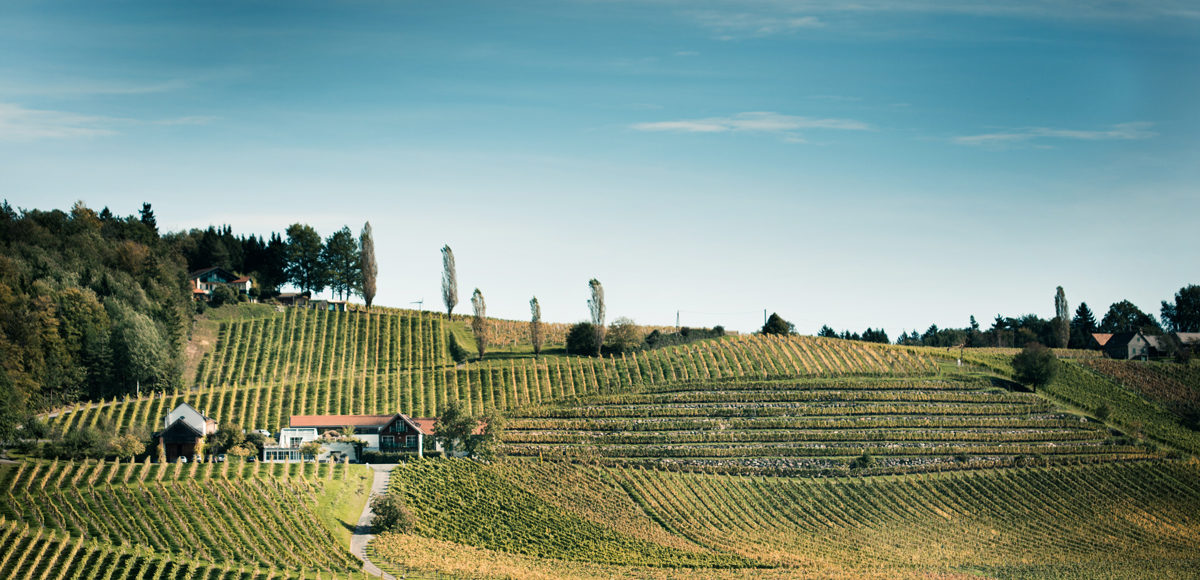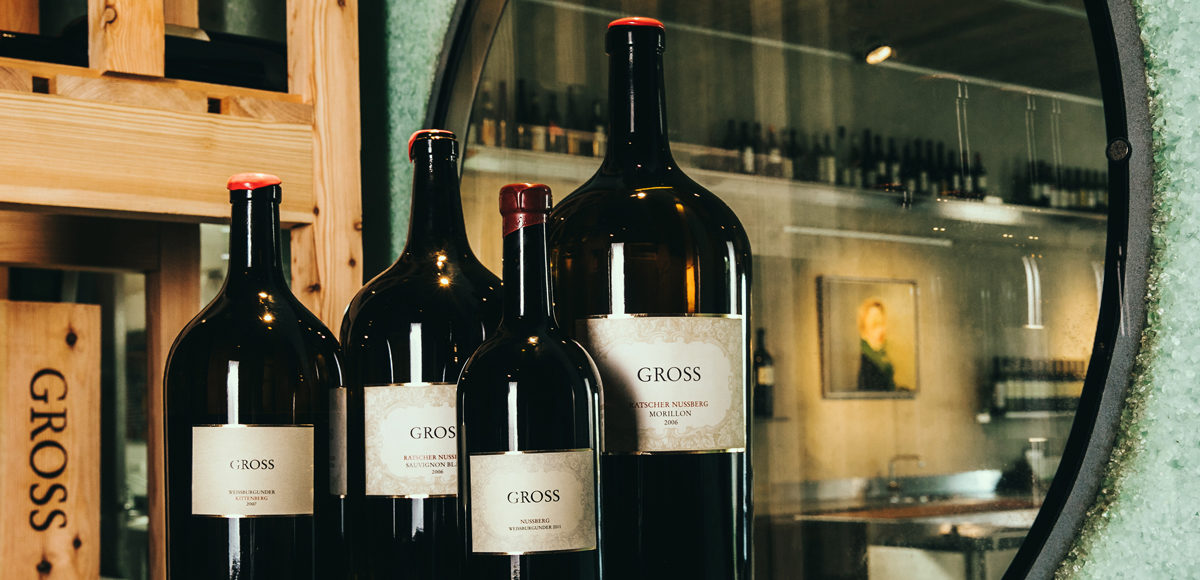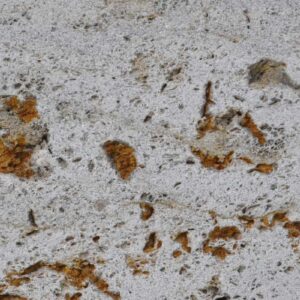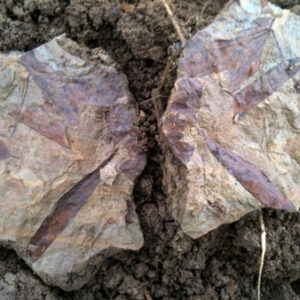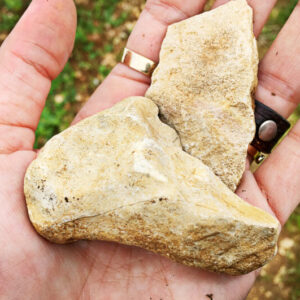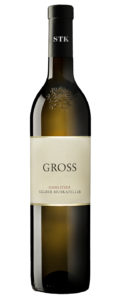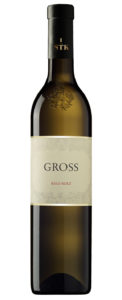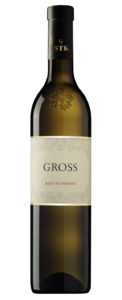“Harvest good grapes at the right point of maturity and the magic of a millennia-old process can begin.” — Johannes Gross
Gross. Let’s get this out of the way right up front. In German, gross simply means big. In modern wine parlance, it means great or grand, as in Grosses Gewächs. In Austria, it is also the proud name of a well-regarded family with more than a century of winemaking history. Johannes Gross is the fifth generation of the family to farm and make wine in Ratsch, on the poetically hilly, verdant edge of Südsteiermark (southern Styria). It’s a place defined by climatic tension between the Alps and the Adriatic with steep, terraced hillsides, a mélange of volcanic and sedimentary soils, and a range of traditional Styrian varieties, foremost sauvignon blanc. The family has holdings in some of Südsteiermark’s best sites, including the two single vineyards, Nussberg and Sulz. The terrain demands intensive handwork; yields are kept very low. In the cellar, the focus is on traditional vinification methods. The results are entrancingly aromatic, lively, by turns finessed and muscular — and revelatory in their varied expressions of Südsteiermark terroir. Johannes and his brother Michael (who leads the family’s winemaking at Vino Gross, just over the border in Slovenia) also collaborate under the name Brüder Gross (soon to be renamed Gross & Gross). Their Jakobi sauvignon blanc is a remarkable tribute to centuries of agrarian tradition in Südsteiermark. This regional sauvignon blanc is labelled with a woodcut-based pictograph that recounts the details of the vintage in iconography taken from traditional almanacs like the ones that hung in Johannes’ and Michaels’ grandmother’s kitchen when they were boys and that have been at the heart of Styrian farm life for centuries.
History
The family estate dates to the mid-18th century, with an ancestor’s purchase of a mixed farm in Ratsch. In 1907, Heinrich Gross bought a vineyard in the Witscheiner Herrenberg (now Slovenia), though it would be decades before the family specialized in wine alone. In the early 1980s, Alois Gross, Johannes’ and Michael’s father — inspired by “many discussions with winemakers around the world,” as Johannes explains — trained his attention on improving wine quality and is now widely regarded as a pioneer of quality winemaking in the region. Alois handed over the estate to Johannes when he was just 21; Alois knew from his own experience how important it is it be trusted to make decisions from an early age. Now Michael oversees the family’s Slovenian estate, Vino Gross in Gorca, while Johannes heads up Weingut Gross at home in Ratsch. They are two different operations, each with their own ideals and philosophies, united by shared family heritage and remarkably similar terroir and varieties.
Johannes Gross
“When I was six, I wanted to become an astronaut,” says Johannes. ”But I left the idea when I heard how long it takes you away from home. Today, it would be unthinkable for me.” Johannes wasn’t much older when, “listening to my father speaking about his wines,” he realized winemaking would be his future, too. “I didn’t study at university, but have done lots of work in the vineyards and cellars, travelled all over the world, and spoken with interesting people in the business.” Johannes and his wife, Martina, with support from Alois, now lead the estate. For them, “happiness is … living amidst vineyards, wild orchards and groves, surrounded by family, doing affectionate and dedicated work.”
Ratsch / Südsteiermark
Südsteiermark is a poetically verdant, hilly region that stretches from the regional capital of Graz, east to the edge of Burgenland, and south to Austria’s Slovenian border. Nestled between the Alps and the Adriatic, steep amphitheaters of vines alternate with meadows, forests, and small fields for a storybook landscape and unique wine culture. “Viticulture has been practiced here since the Romans and is still the number one economic factor in this region,” Johannes explains. Under the Habsburgs, Styria extended into what is now Slovenia, creating a vast viticultural area, split when political borders were redrawn in the aftermath of the two world wars.
Johannes explains the geologic history behind the distinctive terrain: “When the primal ocean retreated around nine million years ago, clay and lime were piled up in criss-cross layers. Rivers and winds carried in gravel and sand, modelling hill after hill.” Soils are now a highly diverse mix of primal ocean and alluvial deposits: sand, gravel, marl (known locally as opok), and shell limestone, even some volcanic soils.
Ratsch is in the heart of Südsteiermark, one of three Styrian subregions, this widely regarded as best suited to the sauvignon blanc that is typically planted on the best parcels. Aromatic whites — including gelber muskateller, furmint, and welschriesling — are among the subregion’s calling cards.
“There are two major challenges to viticulture here: the climatic and the topographical,” notes Johannes. “Unpredictable weather, extremely steep hills, and a wide variety of soil formations in our vineyards are both a challenge and a gift. We need 600 working hours per hectare, which is a multiple of other wine regions. The high location of the vineyards near the Alps makes us a true cool climate area. Aromatic, fresh wines with natural acidity and energy grow naturally with us. The grapes become fully ripe in this Alpine-Mediterranean climate, and due to diurnal temperature variations of up to 20°C, they possess both freshness and aroma.”
Farming and vineyards
In a delicate climate, responsiveness is key. “We work each year a little bit differently according to crop, leaf, and soil management. We want balance in our wines, so we need balance in our vineyards. This also means less crop per vine – about 1-1.5 kg per vine. We are looking for a perfect grape according ripeness, without botrytis. We believe that there is a perfect ripeness window. This window we try to catch.” The wines are above all fresh, driven by natural acidity and energy that, in Johannes’s words, “grow naturally with us” thanks in large part to the heat-trapping function of the bowl-like vineyards and the nightly inflows of starkly cooler mountain air.
Johannes points out: “We find big differences between the soils in our village of Ehrenhausen, which are strongly calcareous, with marl and limestone, and our vineyards in the neighboring village of Gamlitz, where you can find gravel and sand, and very aromatic, early accessible wines grow” — foremost gelber muskateller.
The Gross family was able to purchase the Nussberg, a named vineyard since the 15th century, in 1986. (The prior owner left behind a bottle of “Nussberger” from the 1868 vintage.) It’s a bowl-shaped basin ranging between 370 and 460 meters (1,200 and 1,500 feet) above sea level, with slopes as steep as a startling 85%. Even within this single Ried, there is limestone, marl, and a flank of volcanic origin. Its exposures are south and west, and it opens to the Koralpe mountains in the west, allowing in cooler air.
Sulz is a south-facing site, sheltered from the Alpine climate in the west and open to the east. As a result, it’s one of Südsteiermark’s warmest sites. Its range of elevations is similar to Nussberg’s and only somewhat less steep. Soils are heavy chalk-bearing clay and conglomerate.
In the cellar
“In the cellar, we take many steps back to the techniques my father had at the beginning of his time as a winemaker,” Johannes says, echoing the sentiment of his generation.” In short: “Do not try to make a wine that was not already in the grape.” All the sauvignon blanc wines are destemmed and given a short maceration following by gentle pressing, slow, spontaneous fermentation in traditional wooden barrels, 12 months’ maturation in large traditional wooden barrels and another six months in stainless steel tanks. (Johannes strongly recommends decanting the single-vineyard bottlings.)
Ratscher Sauvignon Blanc, from limestone and loam soils, is given a brief maceration and longer aging in wood and steel for structure, balance and marked length. Ried Sulz Sauvignon Blanc comes from a very large vineyard (Grosslage) comprised of many small single vineyards (Einzellagen). Here the soils are limestone and clay, and vines are 27 years old. The wine is complex and muscular, showcasing the great aging potential of the family’s wines. Ried Nussberg is the top wine of the Gross estate, hailing from the eponymous small single vineyard. The soil is a mixture of clay and limestone and vine age ranges from 7 to 37 years. Nussberg is vinified just like Sulz, but where Sulz is muscular, Nussberg is all about finesse; it is elegant, with a refreshing saltiness, and incredible length and aging potential.
Gamlitzer Gelber Muskateller hails from the neighboring village of Gamlitz, where the soils are gravel and sand, giving highly aromatic and easy-drinking wines. The grapes are briefly macerated before undergoing a gentle press cycle. Spontaneous fermentation takes place in stainless steel tanks where the wine remains and matures for six months on the fine lees.
Gross & Gross: Jakobi
Johannes and Michael created the Jakobi project to honor a signature variety of Südsteiermark — sauvignon blanc — as well as the traditions and history of the region. The label is a woodcut-based pictograph that recounts all the significant details of the vintage — weather, lunar cycles, planting, pruning, harvest — in traditional iconography. It is based on the age-old Mandl (little figures) calendar, once created for the illiterate and still a feature in many homes in the region today. The wine takes its name from Jakobi (Saint James) — whose culturally significant feast day typically coincides with veraison — celebrated in Ratsch on July 25 each year. According to tradition, on this day, wooden windmills are erected in hopes that their rattling noise will keep birds away from the ripening grapes. The label represents a fascinating intersection between faith, agrarian custom, and modern winemaking that is well worth further research and study. The wine behind the label is a fresh, super drinkable sauvignon blanc sourced from Styrian and Slovenian vineyards.
